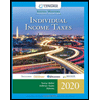
Disassociation of a partner:When a partner withdraws or retires from a
The
Disassociation of a partner:When a partner withdraws or retires from a partnership, that partner is disassociated from the partnership. In most cases, the partnership purchases the disassociated partner’s interest in the partnership for a buyout price. Section 701 of UPA 1997 states that the buyout price is the estimated amount if, the partnership assets were sold at a price equal to the higher of the liquidation value or the value based on a sale of entire business as a going concern without the disassociated partner and the partnership was wound up and all partnership obligations settled. The partnership must pay interest to the disassociated partner from the date of disassociation to date of payment.
The journal entry to record K’s withdrawal when K is paid $42,000 and only his share of goodwill is recorded.
Disassociation of a partner:When a partner withdraws or retires from a partnership, that partner is disassociated from the partnership. In most cases, the partnership purchases the disassociated partner’s interest in the partnership for a buyout price. Section 701 of UPA 1997 states that the buyout price is the estimated amount if, the partnership assets were sold at a price equal to the higher of the liquidation value or the value based on a sale of entire business as a going concern without the disassociated partner and the partnership was wound up and all partnership obligations settled. The partnership must pay interest to the disassociated partner from the date of disassociation to date of payment.
the journal entry to record K’s withdrawal when K is paid $35,000 and all implied goodwill is recorded.
Disassociation of a partner:When a partner withdraws or retires from a partnership, that partner is disassociated from the partnership. In most cases, the partnership purchases the disassociated partner’s interest in the partnership for a buyout price. Section 701 of UPA 1997 states that the buyout price is the estimated amount if, the partnership assets were sold at a price equal to the higher of the liquidation value or the value based on a sale of entire business as a going concern without the disassociated partner and the partnership was wound up and all partnership obligations settled. The partnership must pay interest to the disassociated partner from the date of disassociation to date of payment.
To explain:The computation of buyout price summarizing the guidelines in UPA 1997.
Want to see the full answer?
Check out a sample textbook solution
Chapter 15 Solutions
ADVANCED FINANCIAL ACCOUNTING-ACCESS
- Iguana, Incorporated, manufactures bamboo picture frames that sell for $30 each. Each frame requires 4 linear feet of bamboo, which costs $2.50 per foot. Each frame takes approximately 30 minutes to build, and the labor rate averages $14 per hour. Iguana has the following inventory policies: Ending finished goods inventory should be 40 percent of next month’s sales. Ending direct materials inventory should be 30 percent of next month’s production. Expected unit sales (frames) for the upcoming months follow: March 295 April 290 May 340 June 440 July 415 August 465 Variable manufacturing overhead is incurred at a rate of $0.20 per unit produced. Annual fixed manufacturing overhead is estimated to be $9,000 ($750 per month) for expected production of 5,000 units for the year. Selling and administrative expenses are estimated at $800 per month plus $0.50 per unit sold. Iguana, Incorporated, had $11,800 cash on hand on April 1. Of its sales, 80 percent is in cash. Of the…arrow_forwardI am looking for the correct answer to this general accounting problem using valid accounting standards.arrow_forwardI am trying to find the accurate solution to this general accounting problem with appropriate explanations.arrow_forward
- Scarlett Manufacturing uses the number of machine hours to allocate overhead costs to products. In a typical month, 8,400 machine hours are expected, and the average monthly overhead costs are $7,560. During March, 8,100 machine hours were used, and total overhead costs were $7,290. Required: Compute Scarlett's predetermined overhead rate and the amount of applied overhead for March. Round your answers to the nearest cent.arrow_forwardHello tutor please given General accounting question answer do fast and properly explain all answerarrow_forwardI am looking for the correct answer to this general accounting question with appropriate explanations.arrow_forward
- A company discarded a storage cabinet it had originally purchased for $14,500. The cabinet had $9,700 worth of accumulated depreciation. The company should recognize a (an):arrow_forwardFresno Manufacturing recently purchased 150,000units of raw material for $555,000. Four units of raw material are budgeted for use in each finished good manufactured, with the raw material standard set at$20.00 for each completed product. Fresno manufactured 36,500 finished units during the period and used 144,800 units of raw material. If management is focused on timely variance reporting to enhance cost control, what is the materials purchase price variance?arrow_forwardHi If image is then please comment i will write values. please dont Solve with incorrect data otherwise unhelpfularrow_forward
 Individual Income TaxesAccountingISBN:9780357109731Author:HoffmanPublisher:CENGAGE LEARNING - CONSIGNMENT
Individual Income TaxesAccountingISBN:9780357109731Author:HoffmanPublisher:CENGAGE LEARNING - CONSIGNMENT





